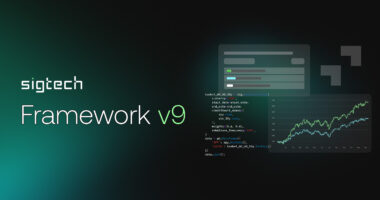In this, the third and final blog post reflecting on the criticisms of quant investing, we consider the comparative performance of quantitative and discretionary investment strategies.
by Peter Huber, Investment Writer & Daniel Leveau, VP Investor Solutions
Determining the performance of quantitative and discretionary funds is a task complicated by the distinct lack of official index data published by the major benchmark providers. This paucity frustrates attempts to compare the two investment styles.
However, some insight can be achieved with the help of comparative performance data published by leading index provider HFR. They compare the systematic and discretionary performance of global macro funds. The graphs below describe how systematic hedge funds in aggregate outperformed their discretionary peers by 1.7% p.a. since January 2008. However, the volatility of the systematic funds was significantly higher (7% vs. 4%), with their outperformance fairly inconsistent over individual years.

An oft-cited study conducted by hedge fund manager AQR, based on data from eVestment, analyzes equity fund performance over a 10 year period (1). It shows that while the two investment styles post similar performance numbers long-term, systematic funds exhibited a slightly lower tracking error, positively impacting their risk-adjusted performance.
When comparing investment styles, the performance of funds – in particular over shorter time periods – should not be an allocator’s sole focus. Rather, the quality and integrity of the respective funds’ underlying investment process should be prioritized. As we saw when considering the role of mathematics in modern investment, rather than proclaiming either quant or discretionary to be superior, it is fair to conclude that both approaches have their merits.
Yet, the major trend currently reshaping the investment management industry cannot be overlooked. Technological advancements are impacting the core of the industry, improving fund managers’ ability to exploit existing alpha opportunities and finding new ways of generating it. Whilst we believe quantitative managers have a competitive advantage in today’s market, many discretionary funds embracing quant analytics as part of an ongoing process of quantification are quickly catching up. Increasingly the industry is defined by an investment manager’s adoption of technology, rather than any arbitrary distinction between quant and discretionary.
Ongoing quantification
Systematic, model-driven approaches continue to gain traction in the industry due to their underlying rationality and potential for generating attractive returns. By sanitizing the distortionary effects of emotion, systematic approaches seek to exclude the influence of subjectivity. Despite this, criticism of quantitative investment strategies is likely to persist, irrespective of performance. However, discretionary managers interested in maintaining their edge and finding new sources of alpha should bear in mind that they are not excluded from utilizing the technologies and methods of quantitative investing. As such, the current distinction between systematic and discretionary strategies is likely to narrow in the long run.
(1). AQR Capital Management (2017) Systematic vs. Discretionary
Reach out to learn more about SigTech’s quant technologies platform.
DisclaimerThis content is not, and should not be construed as financial advice or an invitation to purchase financial products. It is provided for information purposes only and is subject to the terms and conditions of our disclaimer which can be accessed here.




